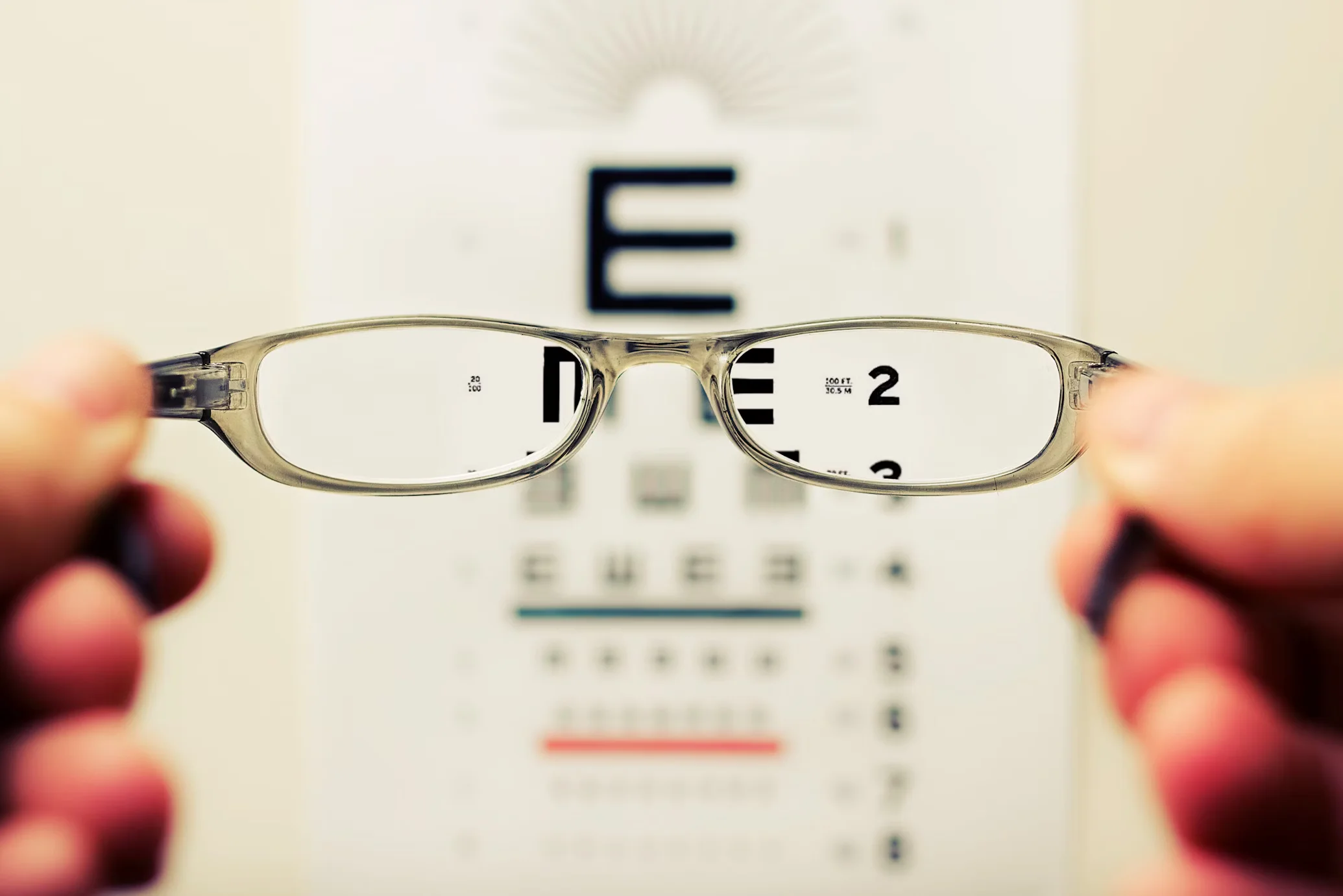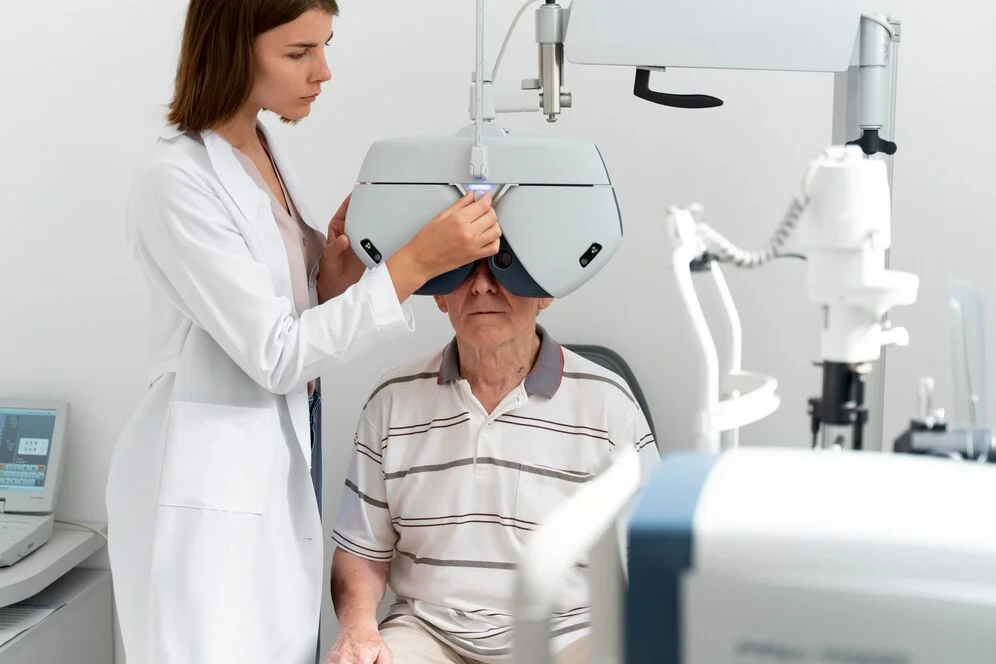Imagine this: you're standing on a bustling sidewalk, a symphony of sights and sounds swirling around you. Suddenly, the world seems to condense. The vibrant storefronts on either side fade, replaced by darkness. Cars approaching from the corner vanish from view. You can only see what's in front of you, like peering through a long, narrow tunnel. This disorienting experience is known as tunnel vision or peripheral vision loss.
Peripheral vision, encompassing everything we see outside our central focus, plays a vital role in our daily lives. It helps us navigate, spot potential hazards, and maintain spatial awareness. When this crucial aspect of sight diminishes, the world shrinks, not just in perception, but also in how we interact.

So, what exactly does tunnel vision feel like?
Let's understand the Peripheral vision condition, its symptoms, causes, and potential treatments.
Feeling the Squeeze: Symptoms of Tunnel Vision
The hallmark symptom of tunnel vision is a restricted field of vision. Imagine looking through a paper towel roll where you can only see what's directly ahead. Everything else – to the sides, above, and below – disappears. This can make even basic tasks like walking down the street or driving a car challenging.
Here are some other signs that you might be experiencing tunnel vision:
Bumping into objects or people: With limited peripheral vision, you might miss objects on the sides of your body, leading to accidental bumps and bruises.
Difficulty navigating crowds: Crowded spaces can become overwhelming when you can't see the people around you.
Trouble reading: Peripheral vision helps us track words across a line of text. With tunnel vision, you might lose your place or have to reread lines frequently.
Poor night vision: Peripheral vision is often weaker in low-light conditions. Tunnel vision can exacerbate this problem, making nighttime activities difficult.
Feeling dizzy or unsteady: The brain relies on visual information to maintain balance. When peripheral vision is compromised, you might feel unsteady on your feet.


Tunnel vision can arise from various conditions affecting the eyes and other parts of the body. Here are some of the most common culprits:
Eye diseases: Glaucoma, a leading cause of blindness, damages the optic nerve, which can lead to tunnel vision. Retinal detachment, macular degeneration, and cataracts can also contribute.
Migraines: The aura associated with migraines can sometimes manifest as temporary tunnel vision, often accompanied by flashing lights or zigzag patterns.
Head injuries: Traumatic brain injuries can damage the visual pathways, leading to vision loss, including tunnel vision.
Low blood flow: A sudden drop in blood flow to the brain, caused by a stroke or blood loss, can temporarily cause tunnel vision.
Detachment of the vitreous: The vitreous is the gel-like substance that fills the eyeball. If it detaches from the retina, it can cause flashes and temporary tunnel vision.
Certain medications: Some medications, particularly those used to treat glaucoma, can have tunnel vision as a side effect.
Panic attacks: During a panic attack, the body goes into "fight or flight" mode, which can cause temporary tunnel vision.
Shedding Light on Solutions: Treatment Options
The treatment for tunnel vision depends on the underlying cause. Early diagnosis and intervention are crucial to prevent further vision loss.
Eye diseases: Depending on the specific condition, treatment for eye diseases might involve medication, laser therapy, or surgery.
Migraines: Medications can help prevent or reduce the severity of migraines, including the associated tunnel vision.
Head injuries: Depending on the severity of the injury, treatment might involve medication, surgery, or rehabilitation therapy.
Low blood flow: Treatment focuses on addressing the underlying cause of the blood flow problem, which could involve medications or surgery.

Living with Tunnel Vision: Adapting and Thriving
While there might not be a cure for all cases of tunnel vision, there are ways to adapt and manage the condition. Here are some tips:
Regular eye checkups: Schedule regular eye exams at Elite Eye Care, New York, to monitor your vision and detect any changes early on.
Good lighting: Ensure adequate lighting in your environment to improve visibility and reduce strain.
Head turning: Since central vision remains unaffected, compensate for limited peripheral vision by turning your head more frequently to scan your surroundings.
Assistive devices: Talk to eye care experts about using low-vision aids like magnifiers or telescopes to help with specific activities.
Support groups: Connecting with others who experience tunnel vision can offer valuable support and shared experiences.
Conclusion
In conclusion, peripheral vision loss, or tunnel vision, can be a disorienting and challenging condition. However, with early diagnosis and proper management, you can live a full and productive life. By scheduling regular eye exams, creating a well-lit environment, and using assistive devices when necessary, you can adapt to your vision loss and continue to thrive.
Remember, you are not alone. If you are experiencing tunnel vision, reach out to your eye doctor and explore support groups to connect with others who understand your challenges.
